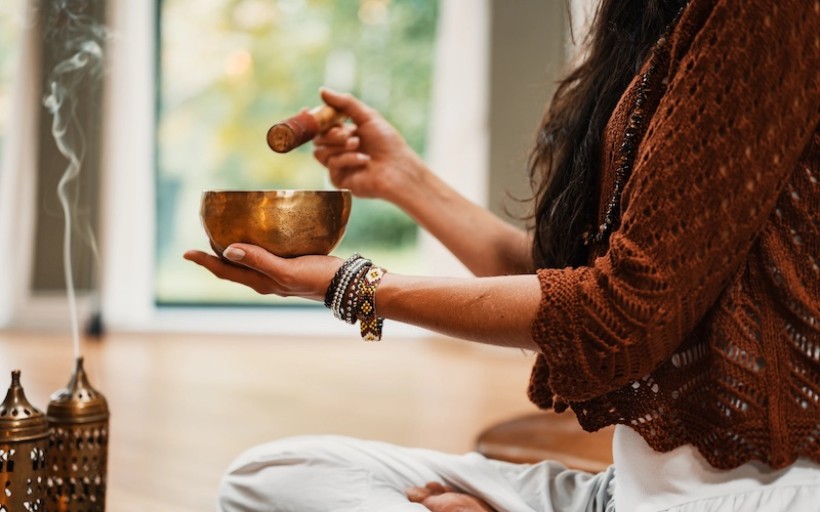Meditation activates your inner pause button. It brings peace, joy and happiness. If you want to learn how to meditate and make it a habit, this article will get you started.
How to meditate? Meditate in 5 steps

Step 1: Find time to meditate
No time to meditate? Many people struggle to fit personal time into their schedule. Before you know it the day has come and gone. If you truly want to learn to meditate, you need to schedule it. Make an appointment with yourself!
Start with a 5-minute meditation in the morning as soon as you wake up. You’re still in a restful state of mind before you get drawn into the daily hectic. Make meditation a part of your morning routine, just like taking a shower or brushing your teeth. Ending your day with several minutes of calmness also feels great before going to sleep.
Step 2: Find a comfortable position
During meditation you don’t want to be distracted by your leg or arm falling asleep. So get into the right meditation posture, one that feels comfortable and doesn’t require too much effort. And no, you don’t have to sit in the Lotus position.
How to meditate? The right meditation position
What is the best meditation position? The basic meditation position is the Lotus position. Place your left foot on your right leg and your right foot on your left leg. This meditation position creates a stable base to sit upright. But it can be difficult or uncomfortable if you’re not flexible. So you’re welcome to do it, but it’s not required.
Find a comfortable position that doesn’t cause any physical discomfort. Whether you’re sitting on a chair or on the floor.
Relax your body; your back should be straight, your shoulders down (no tension in your neck) and your hands gently resting on your lap.
Step 3: Focus on your breathing
Meditation exercises range from visualizations and concentration meditation to guided meditations and meditation in motion. All types of meditation involve focusing on something – music, a voice, motion – that directs your attention away from your thoughts. Breathing is the focus for many meditations.
Are you sitting comfortably? Bring your full attention to your breathing. Let your breath flow calmly. Focus your attention on the air flowing in and out, your belly moving up and down, and find a breathing rhythm. 4 seconds in, 5 seconds out. 4 seconds in, 5 seconds out. You can also inhale for 3 seconds and exhale for 4 seconds if that feels better. Make sure you have a steady breathing pattern with a slightly longer exhalation than inhalation.

Step 4: Letting go of disturbing thoughts
Do you get caught up in thoughts and then drift off? It’s absolutely normal for your thoughts to be all over the place, especially if you’re new to meditation. You don’t have to hide these thoughts or suppress them.
Observe the thoughts without judging them. They are present but you don’t have to do anything about it. Just let them drift away, like clouds in the sky. Acknowledge that your attention has drifted off and bring it back to your breathing. Accept your thoughts (just like the sound of the washing machine on the background or that cool breeze) and consciously bring yourself back to the ‘here and now’.

Feelings come and go like clouds in a windy sky. Conscious breathing is my anchor.

Step 5: How to practice meditation!
When you start meditating, you quickly notice the sense of calm it brings while sitting in silence (or listening to music or a voice that guides you) for 5, 10 or 30 minutes. Eventually you will be able to achieve a complete state of calmness, even if it’s just for a couple of seconds. The more you meditate, the longer you can hold on to that ‘nothing point’ of complete calmness.
Gradually increase the time that you meditate. From 5 minutes a day to 10 minutes and eventually half an hour or perhaps even an hour. Do this gradually and find out what is best for you. Perhaps it takes you a week to build up to an hour or you keep it at 5 minutes, whatever works for you. Important: meditate without expectations! Do it and let meditation happen.
Tip: use the Meditation Moments app
Wondering how to meditate? The meditation app Meditation Moments can help. Including meditations for each moment of the day, varying in length, either with or without guidance.
















